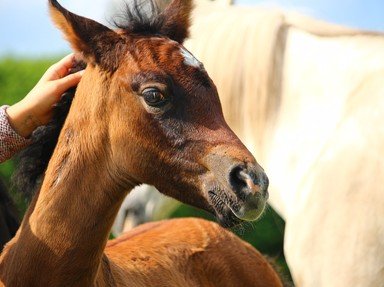Quiz Answer Key and Fun Facts
1. Reining horses are shown with what type of mane and tail? (According to world-wide standards.)
2. Under United States Equestrian Federation breed regulations, Arabians may be shown with a false tail or tail switch.
3. "Booting up" is a term used mostly among Western riders that means:
4. A "roached mane" is:
5. According to the United States Equestrian Federation, when showing Arabian halter horses, substances may be applied to the coat to alter the color, in small quantities (eg white powder on white markings).
6. Baroque-type horses (Friesian, Andalusian, etc.) may show with:
(United States Equestrian Federation guidelines.)
7. Under United States Equestrian Federation regulations, the Three-Gaited American Saddlebred shows with a:
8. When showing in Fédération Equestre Internationale Dressage, continental and French braided manes are not acceptable.
9. A "mud knot" is:
10. When showing a Warmblood in-hand for an American Warmblood Society inspection, the tail MUST be:
11. Biotin is a nutrient used to promote healthy hoof and hair growth.
12. Trimming the hairs along the coronary band of the hoof can really neaten up a horse's appearance for a show! However, there is one problem with this practice:
13. For a traditional "bib" clip, the horse's throatlatch, underside of neck, and legs are clipped.
14. For an Fédération Equestre International dressage competitor, should the tail be braided?
15. In North America, button braids are most commonly seen in:
Source: Author
iloverobyn-xox
This quiz was reviewed by FunTrivia editor
crisw before going online.
Any errors found in FunTrivia content are routinely corrected through our feedback system.
